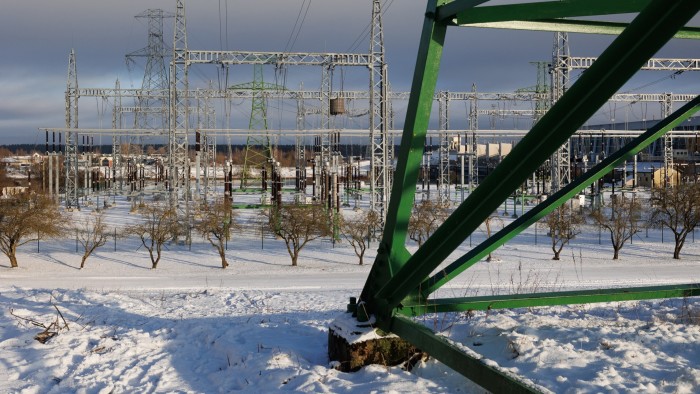Stay informed with free updates
Simply sign up to the EU energy myFT Digest — delivered directly to your inbox.
The Baltic states will sever the last major energy link to Russia and become part of the EU’s electricity network on Sunday, at a time of deepening fears of further sabotage to critical cables.
Estonia, Latvia and Lithuania will switch away from the so-called Brell system connecting them to Russia and Belarus since the end of the second world war and managed almost entirely in Moscow.
No trade of electricity has taken place since Vladimir Putin’s full-scale invasion of Ukraine in 2022 but the link was critical to balancing regional consumption and production.
“We are integrating into the biggest synchronous zone of the world,” said Žygimantas Vaičiūnas, Lithuania’s energy minister. “It’s not only a technical measure, but this is also a historically and symbolically very important action.”
European Commission president Ursula von der Leyen will join Baltic leaders in the Lithuanian capital, Vilnius, to mark the day of synchronisation with the EU grid via Poland.
Sonya Twohig, secretary-general of the EU association of transmission system operators, said it was a “momentous occasion” for the Baltics. Countdowns to “energy independence” have been on display on all the Baltic transmission system operators’ websites, with disconnection from Brell to take place on Saturday.
But Baltic officials fear the synchronisation is not without risks, after a rising number of suspected acts of sabotage to power, data and gas links in the Baltic and North Seas.
In the past 18 months, more than 10 electricity and data cables or pipelines have been damaged by at least three suspected sabotage incidents involving ships dragging their anchors.
Baltic officials privately believe there is a chance that the sabotage of Estlink 2, an underwater electricity cable between Estonia and Finland, has a connection to the desynchronisation effort. Finland seized a vessel belonging to Russia’s shadow fleet of oil tankers over the incident.
“Our job is to prepare [so] that it will not impact our electricity system. But it cannot be neglected that one of the ideas [for Russia] is to compromise the synchronisation project,” said Vaičiūnas.
Estonian climate minister Yoko Alender said Tallinn was deploying soldiers to land connectors and power stations during the synchronisation process.
“With Russia, you never know. It is one of the thoughts and scenarios that it could happen. They could cut us off,” said an EU diplomat involved in the process.
Nefarious actors undermining the confidence of consumers in the operation have also been a critical concern.
Latvian officials told the Financial Times that all government ministries had been put on alert to counter disinformation campaigns that have spread false messages about price spikes and blackouts. Messages about efforts going into making the synchronisation a smooth process were being made daily on news broadcasts, one said.
Stefan Konstantinov, senior power analyst at energy analysis firm ICIS, said that he did not expect the linking of the Baltics to the EU electricity grid to have a significant impact on prices.
But with Estlink 2 out of operation for repair until mid-2025 “any potential incidents, resulting in damage to the remaining submarine interconnectors, Estlink 1 and NordBalt, would likely cause further spikes in Baltic prices”, he added.
The Baltics will connect to the EU grid just like Ukraine did in two weeks after Moscow’s full-scale invasion, a move so fast some EU officials described it as “miraculous”. The link-up with the smaller Baltic grid has taken far longer due to the need for significant investment.

Estonia’s transmission system operator Elering said co-ordination with its EU neighbours had been “a significant cross-border challenge”, as had to maintain the grid construction schedule amid supply disruptions linked to the Covid-19 pandemic and the Ukraine war.
But Elering said the efforts meant that ideally the transition would happen “so seamlessly that consumers won’t even notice the change”.
After February 9, the Russian exclave of Kaliningrad, which was part of the Brell, will have to operate as an independent energy island. Russian authorities had been “investing heavily in power generating assets” to ensure Kaliningrad’s self-sufficiency, Konstantinov said.
EU officials said Kaliningrad had built new gas plants and run several tests, even though there was no communication between the two sides.
Alender said energy independence from Russia had forced the Baltics to increase investments in renewable energy sources, as well as gas plants that could later be converted for use with biogas. Estonia and Finland are also building a third Estlink cable that should be completed in 2035.
“For our people it is immensely important to know that we are no longer dependent in any way . . . on the Russian nation.”
Cartography by Steven Bernard



